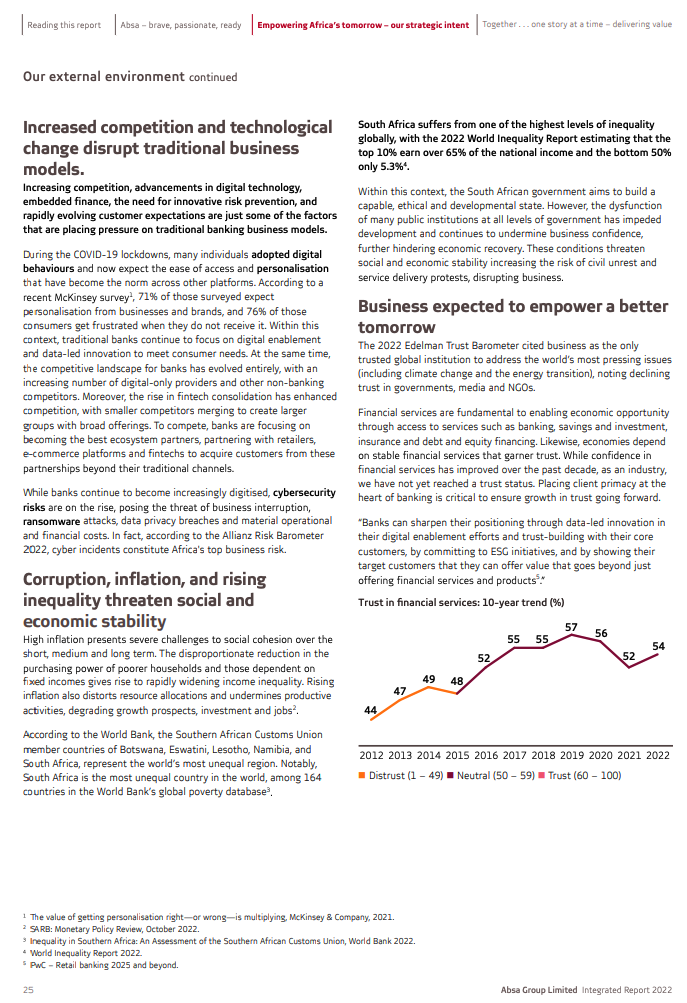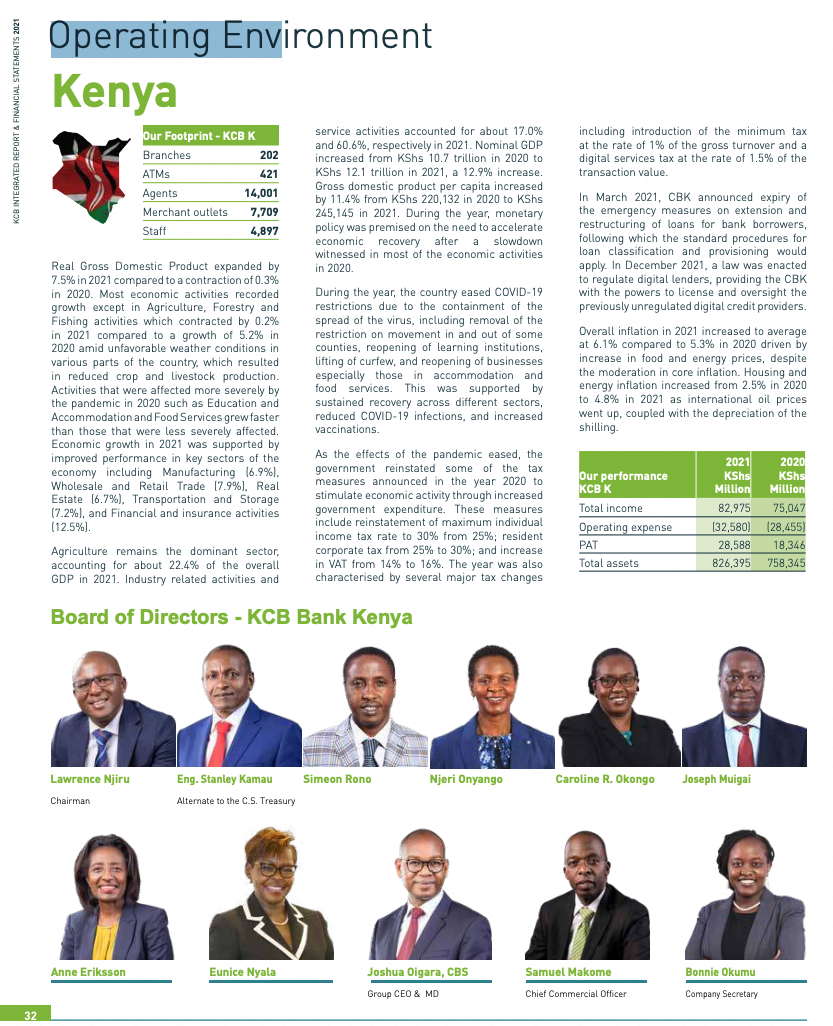The external business environment is the operating context for the business. It includes the economy; competitive dynamics; legal and regulatory trends; and political, social, and environmental considerations.
Value is not created by or within the organization alone but is influenced by relationships with others and the resources used or affected by business activities.
Why Disclose?
Reporting on the business environment provides context for the company’s business model and strategic objectives and is a key link between strategy, risk, and performance. Conversely, a company’s strategy should reflect the challenges and opportunities presented by the business environment. A careful analysis of the business environment provides useful context for investors and stakeholders to assess whether the company is able to create value in a sustainable manner.
Company Markets
- Discuss details of the business model to explain key changes and trends in the markets in which the company operates;
- Include product and input prices, drivers of demand and competitors’ supply, and technology.
External Environment
- Describe macroeconomic, legal, regulatory, environmental, and social factors that materially affect business and key trends;
- Describe who are the main competitors, what are the company’s competitive advantages, and how these competitive advantages allow it to succeed in a competitive environment;
- Address stakeholders’ legitimate and reasonable needs and interests.
Sustainability
- Identify industry- and context-specific environmental and social issues (such as climate change);
- Describe the main environmental and social impacts of the company and how these impact the company’s business activities.
Internal Drivers
- Describe company resources, structures, and processes that can affect the organization’s ability to implement strategy;
- Include internal forces driving costs, productivity, and market access, and recognize the potential effects.



